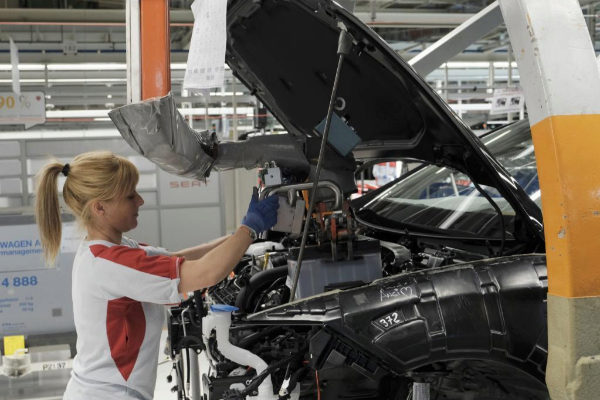Spanish exports, one of the big engines that allowed to get out of the crisis, have cut their good run in June. They reached 24,938.7 million euros, but fell 6.6% compared to May . In year-on-year terms, that is, if June 2019's exports are compared with those of June 2018, the balance shows an increase of 0.9%, a positive figure, but the lowest in the series.
Specifically, in June last year, in year-on-year terms, Spanish exports grew by 3.1%. In 2017, 6.1%. In 2016, 2%. And so, year after year positive balances appear above 0.9% of this 2019 . In June 2010, the first year of the Ministry of Industry, Commerce and Tourism series, exports grew by 17.7%.
In inter-monthly terms, June is a month in which it is not uncommon for exports to fall, but never as much as 6.6% this year. The biggest decline, 2.8%, was in June 2017.
By sectors, the biggest export prick has been the one registered in June for raw materials, which has contracted by 9.7%, followed by that of consumer durables (-5.9%). Important has been however the decline in exports in the automobile sector , a sector that contributes practically 10% of our GDP, and which have fallen 4.6% in the last year.
The reactions to the export braking have not been expected. The Club of Exporters and Investors ensures that the context of international instability and less growth in world trade "are not sufficient factors to explain the slowdown in Spanish exports", and attributes this lack of dynamism of our foreign sector to the " inability to the political forces to create a solid and stable government that faces the necessary reforms to boost the international competitiveness of Spanish companies. "
The Secretary of State for Trade, meanwhile, wanted to highlight that so far this year, from January to June, exports have not only not fallen, but have increased by 1.7%. A positive figure, therefore, but below the European average, which has grown by 2.6%.
In response to those first six months of the year, exports have yielded positive balances by sector, highlighting the growth recorded in capital goods (+ 6.7%), food, beverages and tobacco (+ 3.5%) and chemical products (+ 3.2%). The figures of the automobile sector are not positive, however, according to the photo of the first semester, with a return of 5.7% .
The trade deficit rises 0.9%
The trade deficit reached 14,711.8 million euros in the first six months of the year, a figure 0.9% higher than that registered in the same period of 2018, when it amounted to 14,585.3 million euros, according to data published this Wednesday by the Ministry of Industry, Commerce and Tourism.
On the other hand, imports rose at a slightly lower rate, 1.6%, to 162,120 million euros, which also represents a new historical high.
The non-energy balance showed a deficit of 2,587.1 million euros until June, exceeding the deficit of 2,348.4 million euros in the same period of 2018, while the energy deficit decreased 0.9%, according to Europa Press.
The coverage rate -exports on imports- stood at 90.9%, practically the same as in the first half of 2018.
Regarding imports, these increased in the sectors of capital goods (+ 4.5% year-on-year), energy products (+ 0.6%) and chemical products (+ 6.7%) and fell back in the sector of car (-2.5%).
EXPORTS TO THE EU GROW
Exports to the European Union, which accounted for 66.4% of the total, increased 1.5% in the first six months of the year. Specifically, sales to the euro zone (51.9% of the total) advanced 1.1%, while those destined for the rest of the European Union (14.4% of the total) increased 2.6%.
Sales to third destinations, which accounted for 33.6% of the total, rose 2.2% between January and June, with advances in exports to North America (+ 10.6%), Asia - excluding the Middle East- (+ 8.9%), Africa (+ 5%) and Oceania (+ 2.9%). On the contrary, those destined for the Middle East (-13.4%) and Latin America (-2%) retreated.
THE DEFICIT LOWERED 37% IN JUNE
In June alone, merchandise exports increased 0.9% over the same month of 2018, to 24,938 million euros, while imports fell 2.6% year-on-year, to 26,471.3 million of euros.
As a result, the trade deficit stood at 1,532.7 million in the sixth month of the year, 37.4% less than in the same month of 2018, when it was 2,448.2 million euros. The coverage rate stood at 94.2%, a percentage 3.2 points higher than June 2018.
The non-energy balance showed a surplus of 386 million euros (deficit of 659.1 million euros in June 2018) and the energy deficit increased 7.2%.
According to the criteria of The Trust Project
Know more- Business
- economy
Economy The ceramic sector reactivates foreign sales
ResultsEndesa earns 3% more until June thanks to the liberalized business
Results Repsol earns 26.7% less until June and raises shareholder remuneration

